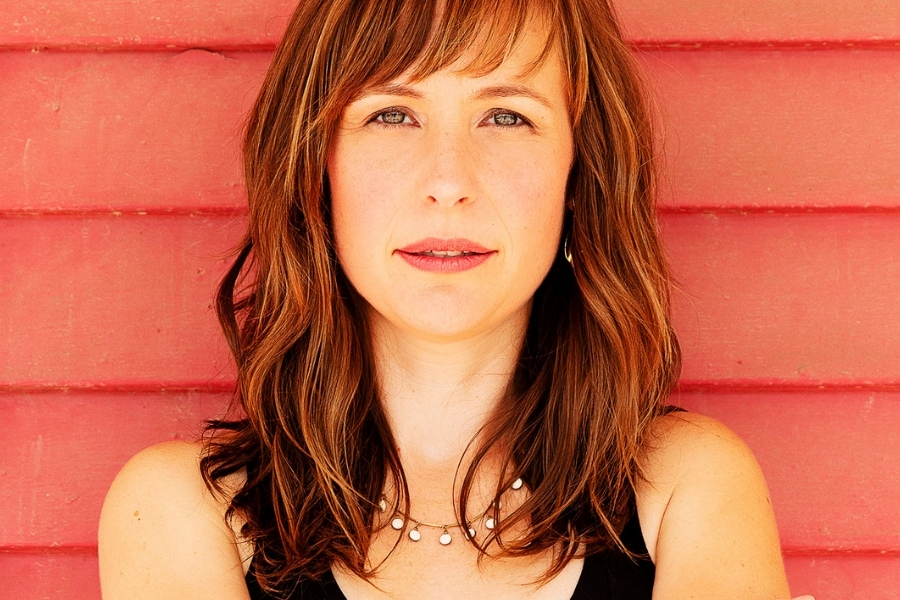Sue Passmore is a co-founder and member of the Canadian band, Good Lovelies. In her 12-year professional career as a songwriter and performer with the Good Lovelies, she has won a Juno and four Canadian Folk Music Awards. The Good Lovelies have toured all over the world: in the US, Canada, Australia, Germany, the Netherlands and the United Kingdom; the band has also recorded 5 full-length albums, 2 EPs and 1 live album. The Good Lovelies’ most recent album Shapeshifters (2018), saw its first single, “I See Gold”, reach #1 on the CBC Music charts, earning the band a SOCAN Music Award, while their Canadian release tour kicked off at the legendary Massey Hall stage in Toronto. “I See Gold” also made CBC’s Top 100 list for 2018, and received a nomination for “Best Song” at the International Folk Music Awards.
Over the course of their career, the Good Lovelies have written, recorded and performed with many notable Canadians including: Stuart McLean (Vinyl Café), Kathleen Edwards, Fred Penner, Jill Barber, Royal Wood, Robyn Dell’Unto, Lily Frost, Peter Katz and Emma-Lee.
After conducting countless harmony workshops with the Good Lovelies, Passmore has teamed up with choir director Marie Anderson (formerly of La Jeunesse Northumberland Girls’ Choir), and has created a songwriting workshop for Anderson’ new youth choral program: Sounds of the Next Generation (SONG). The workshop was a great success and is currently in its second year.
What inspires you to create music?
Finding a way of putting words to music has intrigued me since I was a little kid – and my earliest attempts are pretty entertaining to look back on. I love the moment when all the parts of a song click together at last, that “YESSS!” moment when you feel the song has reached its best version. Finally, when music I have created reaches people, when I hear it has had a positive impact, that inspires me to continue. It’s exciting to know that something I write can make a difference in someone’s day-to-day moments.
Do you have a process to your songwriting or when creating music?
I tend to get stuck on a nugget I like in the beginning, be it melodic, lyrical and/or chordal, and the songs grow from there. It’s important to me that a song is lyrically interesting, and I spend a fair bit of time circling around lines until they sound right. I like to remain open to change and to outside input, to letting ideas morph along the way; writing is becoming more of a social activity for me vs an insular one, and I’m learning a lot by working with others. Finally, there’s got to be a test audience of 1 – if I’m hesitant about any part of a song in front of an audience of 1, I know I won’t want it heard by the masses.
How did you get your start as a creator in the industry?
I met many musicians during my time at York University, who influenced my path as a creator, and some who I continue to work with today. Shortly after graduation, I found myself in my first band, called Bluesativa, and that was my initiation to the industry as a professional creator. After a solo album release in 2006, Good Lovelies began quite by accident. Co-founders Caroline Brooks, Kerri Ough and I felt we had potential to succeed as a team of creators and decided to run with it – still running 12 years later!
How has your music evolved since you first became a recording/performing artist?
Stylistically, it’s been a bit of a ping pong game, moving from jazz to electro-lounge, indie singer-songwriter to folk-roots and western swing, and most recently I’ve been dipping my toes into the world of pop-folk. My approach to lyrics, arrangements, and vocal delivery have also all evolved over the years. I have learned a lot by working with a variety of producers, musicians and songwriters, and have reached an exciting time in my career where I feel my best work is definitely still to come.
What do you see in the future for songwriting and music creators like yourself?
As we’ve always done, I imagine that as songwriters and music creators we will continue to seek out our best songs and sounds, to push boundaries, and aim to reach our audiences in new and unexpected ways.



